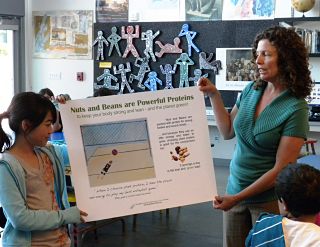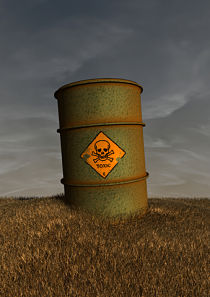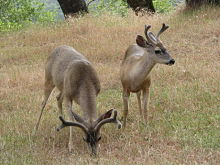Posts Tagged ‘making a difference now’
Friday, August 20th, 2010
Barbara Cole Gates Puts the “Healthy” Into School Lunches with Faith, Patience, and Gumption

Lean and Green Kids is impacting the lives of kids now, which means a healthier adulthood later
Barbara Cole Gates is a mom on a mission – to teach kids that “nuts and beans are powerful proteins.” This mission launched when her two children were very young. Barb was a daycare provider. She served the youngsters in her care plant-based meals and snacks. “All the kids loved my food, including the beans” she observed. “Kids just need the opportunity to experience them with a positive perspective.”
Now, as the founder and director of the nonprofit Lean and Green Kids, she is reaching a broader (and older) audience, which includes students, educators, school food service providers, and food policy makers.
Her nonprofit is impacting the choices children have in school cafeterias and the way teachers teach nutrition education. In Oceanside, CA for example, elementary school students benefited from “Lean and Green Mondays,” with healthy plant-based choices.
At the 2009 CA School Wellness Conference, Barbara realized something was missing (more…)
Tags: Barbara Cole Gates, getting healthy, Janice Stanger, Lean and Green Kids, making a difference now, National School Lunch Program, Plant-based nutrition, school lunches, whole foods
Posted in Plant-based nutrition | Comments Off on Getting Kids Lean and Green
Sunday, August 8th, 2010
Sanctuary Animals Give an Invaluable Gift

The Animal Acres T-shirt says it all
The early morning was cool as my daughter Angela, our friends Teagen, Rose, and Rachel, and I set out for the 164 mile drive to Animal Acres. I had long wanted to visit this sanctuary for rescued farmed animals, a bit north of Los Angeles. Finally, my friends set the date and invited me and Angie to be part of the adventure.
I was relaxed, looking forward to spending a cruelty-free day. In summer my favorite haunt is the beach, in search of the perfect body-surfing wave. Being carried by the ocean feels (more…)
Tags: Animal Acres, inner peace, Janice Stanger, making a difference now, nutrition facts, Plant-based nutrition, whole foods
Posted in Animals | 1 Comment »
Wednesday, July 21st, 2010
Krista Watts Trades In Her Cat Allergies and Inhalers for Veggie Sandwiches

Krista and her wonderfully supportive husband Jeff are the picture of health and happiness
For nine years, Krista Watts needed to use an inhaler several times a day just to breathe. Her asthma overshadowed her life. Exercising was difficult, often leading to wheezing and a flushed face.
Krista’s asthma ordeal began after she adopted two cats. Tests led to the conclusion she was allergic to her new furry family. Unwilling to give up her much-loved pets, she resigned herself to living with a condition that was unpleasant at best, and life-threatening if it got out of hand.
For the last two and half years, though, Krista has not used her inhaler – not even once. She still has her cats, and plays with and pets them every day. Now age 38, she is amazed at her vigorous health and plummeting (more…)
Tags: asthma, cat allergy, getting healthy, Janice Stanger, Krista Watts, making a difference now, Plant-based nutrition, reverse chronic disease, vegetables, whole foods
Posted in Health | 1 Comment »
Saturday, June 19th, 2010
Killer Reasons to Break Up with Your Grill This Summer
The start of warm summer breezes and promise of the Fourth of July inspire many to drag out their barbecue grill. Charcoal and lighter

Barbeques deliver a double dose of dangerous chemicals. These hazards get into your body through your lungs and your digestive tract.
fluid join the bestseller list. Outdoor cooking sets the stage for traditional get-togethers with family and friends.
This romance with barbecues has a dark side that few know about. After all, information about polycyclic aromatic hydrocarbons (PAH) is obscured by millions of dollars of ads and happy images for grilled meat.
As is the case for most toxic chemicals, the long-term health effects of PAH are poorly understood, so easy to ignore. Yet PAH is an insidious public health nightmare that can invade your own life and the next generation.
Truth in labeling would require an explicit warning on bags of charcoal and packs of meat and fish. “Eating grilled or smoked animal foods can cause DNA mutation, cancer, and lower intelligence in your children.” Wide knowledge of these dangers might inspire many to consider alternatives, or at least make informed decisions.
Polycyclic aromatic hydrocarbons are a product of incomplete combustion of materials that contain carbon. Burn tobacco, wood, oil, gasoline, coal, garbage – or meat and fish – and PAHs will form. Over 100 varieties of PAHs can menace our health and the environment.
A widespread nutrition myth touts that the major harm from (more…)
Tags: barbecue, charcoal, environmental degradation, family, getting healthy, HCA, heterocyclic amines, in utero, Janice Stanger, making a difference now, nutrition facts, PAH, Plant-based nutrition, polycyclic aromatic hydrocarbons, whole foods
Posted in Health | Comments Off on Barbecue with a Side of Chemicals
Tuesday, May 11th, 2010
Cancer Panel Critics Portray Ignorance as Bliss
The President’s Cancer Panel, in the April 2010 report Reducing Environmental Cancer Risk, implores the nation’s scientists and policymakers to decisively address the potential harm from over 80,000 manmade chemicals. This call-to-action is dense with

There is no "away." All toxins end up on our planet, polluting air, water, soil, plants, animals, and us.
stunning facts and a willingness to question accepted wisdom. The document is clearly written, immensely readable, and more suspenseful than a mystery or spy thriller.
The Panel directly takes on some of the wealthiest and most powerful lobbies in the US. The chemical, agricultural, pharmaceutical, medical care, and medical research industries all face intense and direct scrutiny. The Panel also highlights the weakness of government “regulatory” agencies, which often do little more than rubber stamp industry requests at the public’s expense. The Panel even takes the military to task for its unchecked role in spreading carcinogens.
Yet the report is not sensational or strident in tone. It doesn’t have to be. The facts speak for themselves, and any extraneous commentary or criticism would only weaken the conclusions. Reducing Environmental Cancer Risk is meticulously researched, with 454 direct references and input from 45 experts from academia, government, industry, and advocacy groups who testified at Panel meetings.
You might think that it’s just common sense that toxic manmade chemicals may cause cancer and other serious health problems. You might believe that major scientific organizations would welcome investigation into this critical and poorly understood topic.
You would be wrong. Critics from the New York Times to the American Cancer Society have bashed the (more…)
Tags: American Cancer Society, cancer, Dr. LaSalle Leffall, Dr. Margaret Kripke, environmental contaminants, environmental degradation, getting healthy, Janice Stanger, making a difference now, Plant-based nutrition, President's Cancer Panel
Posted in Environment | Comments Off on Toxic Chemicals: How Little Do You Want to Know?
Friday, April 2nd, 2010
Enjoying Whole Foods on a Trip Does Not Have to be Difficult
While some people find travel to be the high point of the year, others loathe it as a necessary evil. Regardless of where you fall on this spectrum (I’m about in the middle), you may dread the hunt for healthy food when traveling. You may be tempted to just grab

You may be traveling far from home. You can do a lot better than the usual airline or airport food by bringing your own.
whatever is convenient, even if you are usually on a whole foods diet.
At home, you have all the advantages. You’ll probably get hungry at predictable times, and can stock your pantry and refrigerator in advance. You know where to shop to get the vegetables, fruits, beans, potatoes, and whole grains that are the foundation for satisfying whole foods throughout the day. You can cook in familiar surroundings with all the pots, pans, and kitchen knick knacks you want. Your favorite restaurants with the food choices you like are nearby.
You may think it’s not a problem to just eat whatever is handy when away from home. The thinking is that the trip is only temporary, so you will restart healthy eating when it’s convenient. The problems with this reasoning (more…)
Tags: getting healthy, global warming, Janice Stanger, making a difference now, Plant-based nutrition, reverse chronic disease, travel, vegetables, whole foods
Posted in Plant-based nutrition | 1 Comment »
Saturday, March 20th, 2010
Bill McKibben and 350.org Can Magnify and Speed Their Impact
Bill McKibben, leading the international climate campaign 350.org, urged an attentive audience at Natural Products Expo West to make a difference for the future of the planet. Over 5200 demonstrations, which circled the globe in 181 countries on October 24, 2009, show grassroots understanding of the need to reduce atmospheric carbon dioxide to no more than 350 parts per million. The current level of 390 parts per million, rising with no end in sight, spells catastrophe for life on earth as we know it.
The most significant part of the talk was McKibben’s answer to an audience question. One woman asked why 350.org does not include a truly sustainable diet as a critical action item in the campaign. She pointed out that a recent analysis by Worldwatch Institute demonstrates that 51% of greenhouse gases are directly traceable to raising animals for food.

The effect of these native ruminants, in an intact ecosystem, on greenhouse gases is in no way like the impact of cows
The obvious solution to getting at least halfway to the goal of stopping climate change is simple, rapid, and no cost – eat a plant-based diet.
In his response, McKibben acknowledged that factory farming animals is a huge cause of climate change. However, he was not advocating immediate action to change diet. Instead, he advanced the idea that a carbon tax, once enacted, would make factory farmed animals so expensive that meat would be priced out of the range of most people. This would happen because people in the animal foods business would have to pay the “true cost” of their carbon impact.
McKibben also theorized that “grass fed cattle” could actually be helpful in reducing greenhouse gases. The theory is that, as large animals roam and trample vegetation into the soil, the ground itself stores carbon and keeps it from (more…)
Tags: 350.org, Bill McKibben, Climate change, environmental degradation, global warming, greenhouse gases, Janice Stanger, making a difference now, Natural Products Expo West, Plant-based nutrition, process of change, water pollution, water shortages, whole foods
Posted in Climate change | Comments Off on Every Bite of Food Pushes Greenhouse Gases Up or Down
Sunday, March 14th, 2010
Natural Product Expo West Is 300,000 Square Feet of Contradictions
The Anaheim Convention Center is host this weekend to Natural Product Expo West, an extravaganza of almost 2,000 exhibitors capitalizing on people’s desire to reconnect with nature and save the planet. While consumers have pure motives, the marketers and their offerings are a contradictory group.

This is nature
I attended the Expo to see if the concepts of “natural” and “product” can really be married. After all, natural is from nature – that much is obvious. But a product, by definition, is manmade and saleable. So it seems a natural product would be an oxymoron.

This is nature packaged
The exhibitors with the easiest job of realizing the natural product concept were the clothing companies. Humans do need to wear clothes to survive in most climates (and avoid arrest). The range of organic cotton, hemp, and other plant fibers was heartening. Hopefully we will find more choices made from these fabrics in mainstream clothing stores.
The range of personal care and cleaning products made solely or mostly from natural ingredients (as (more…)
Tags: environmental degradation, getting healthy, Janice Stanger, making a difference now, Natural Products Expo West, Plant-based nutrition, whole foods
Posted in Plant-based nutrition | Comments Off on Can “Natural” and “Product” Really Coexist?
Saturday, March 6th, 2010
“Global Warming” is Real, But The Reality Goes Far Beyond Warming
With a frigid winter chilling much of the country and heavy snows setting new records, people have an easy time concluding that global warming is just a myth. Maybe you, or people you know, think it’s a scientific theory that did not pan out.

Record snows lead the way in climate change
In fact, once you understand global warming, you may be alarmed that all the snow so far is just a taste of what is to come over the next decade. “Global warming” indicates that the earth’s temperature, on average, is rising. It does not mean it will always be hotter in every location on each day of the year.
“Climate destabilization” and “climate change” are both more accurate descriptors of the weather shaping up worldwide. Average temperature, evaporation, wind and ocean current patterns, and forests, among many other factors, determine the complexity of weather day by day. Over time, weather on each day forms the overall pattern that is climate.
We are used to a specific climate pattern throughout the year in different parts of the globe. As those patterns shift with rising greenhouse gas concentrations and subsequent higher average temperature, weather will become more extreme. Hot places will get hotter, but the cold will get colder. Droughts and floods will (more…)
Tags: global warming, greenhouse gases, Janice Stanger, making a difference now, Plant-based nutrition, snow, whole foods
Posted in Climate change | Comments Off on Heavy Snows Are Signs of Climate Destabilization














